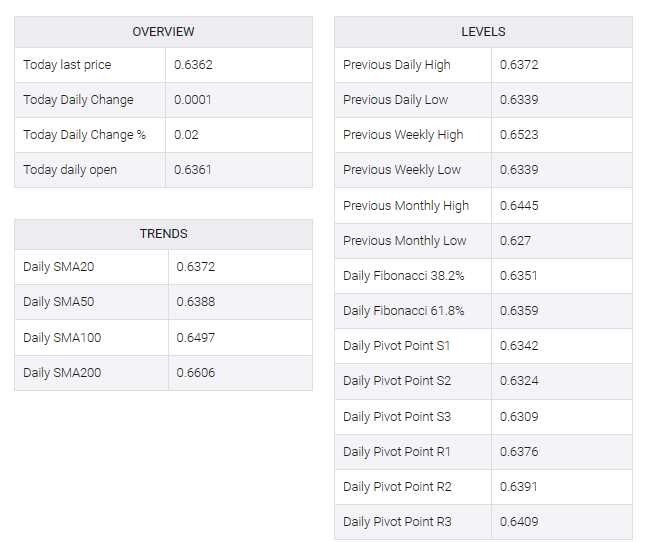-
AUD/USD remains on the defensive above the mid-0.6300s in early Monday.
-
The US University of Michigan Consumer Sentiment dropped, but inflation expectations rose in November.
-
The RBA Monetary Policy Statement said the nation’s inflation has passed its peak, but it is considerably higher than expected.
The AUD/USD pair remains under selling pressure during the early Asian session on Monday. The concern over economic growth in China weighs on the Australian Dollar (AUD) and the higher US Treasury bond yields lift the US Dollar (USD) higher. The pair currently trades near 0.6355, losing 0.07% on the day.
Preliminary data from the US University of Michigan consumer sentiment fell to 60.4 from 63.8 in the previous month in November, the lowest reading this year. Meanwhile, 1-year inflation expectations rose to 4.4% from 4.2% and 5-year to 3.2%, the highest reading in 11 years.
Markets are seeing a low chance of the Federal Reserve (Fed) raising interest rates again at its December meeting. According to CME FedWatch tools, the probability of a December rate hike fell to 14.4%. However, Fed Chair Jerome Powell said they would not hesitate to raise rates again if necessary. This week’s key economic data, including the US consumer price index (CPI), could hint at monetary policy guidance.
On the Australian front, the Reserve Bank of Australia (RBA) released its Monetary Policy Statement (MPS) on Friday, indicating that the country’s inflation has passed its peak, but it remains high enough and is proving to be more persistent than expected for several months. Earlier the RBA will bring inflation back to target, but upcoming data will determine whether additional monetary policy tightening is necessary.
Looking ahead, market players will monitor the Australian Westpac Consumer Confidence for November on Tuesday. The US Consumer Price Index (CPI) will be a closely watched event by traders. The monthly CPI figure is expected to ease to 0.1% in October from 0.4% in the previous reading, while the core CPI is estimated to remain at 0.3%.


